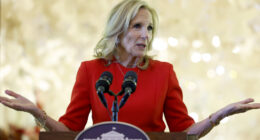
The tsar is talking tough publicly…
[embedded content]
…but across the border, his men need a breather after four months of war. They succeeded in taking Sievierodonetsk and Lysychansk, securing a victory in Luhansk at God knows what cost. Donetsk is next, and that looks to be harder.
Russian Defense Ministry Spokesperson Igor Konashenkov announced on July 7 that Russian forces in Ukraine are pausing to rest and regain their combat capabilities, confirming ISW’s assessment that Russian forces have initiated an operational pause. Konashenkov did not specify the intended length of Russian forces’ operational pause. As ISW previously assessed, Russian forces have not ceased active hostilities during this operational pause and are unlikely to do so. Russian forces still conducted limited ground offensives and air, artillery, and missile strikes across all axes on July 7. Russian forces will likely continue to confine themselves to small-scale offensive actions as they rebuild forces and set conditions for a more significant offensive in the coming weeks or months.
“The units that performed combat missions … are taking measures to recover their combat capabilities. The servicemen are given the opportunity to rest, receive letters and parcels from home,” read a statement from the Russian defense ministry. Seems like the right time to arm Ukraine to the max and see if they can catch the Russians on their back foot. Time is short, after all: Winter is coming (to borrow a phrase), and the closer it gets the more nervous Europeans will become about trying to stay warm without energy from an antagonistic Russia.
Starvation is coming too — not for Europe but for third-world nations in Asia and Africa, notes Timothy Snyder. Putin is looking to create his own Holodomor for strategic advantage, except this time it won’t be Ukrainians who go hungry. It’ll be populations who depend on Ukrainian grain exports for survival. If Russia succeeds in cutting off the rest of the world from Ukraine’s breadbasket, entire regions could be destabilized. Russia is taking the world’s poor hostage, in other words, in hopes of forcing the compassionate west to meet its war demands.
Putin’s hunger plan is also meant to generate refugees from North Africa and the Middle East, areas usually fed by Ukraine. This would generate instability in the EU. 13/16
— Timothy Snyder (@TimothyDSnyder) July 2, 2022
When the food riots begin, and as starvation spreads, Russian propaganda will blame Ukraine, and call for Russia’s territorial gains in Ukraine to be recognized, and for all sanctions to be lifted. 15/16
— Timothy Snyder (@TimothyDSnyder) July 2, 2022
That prospect is so dire that George Will, not normally a staunch hawk, recently called for Ukraine’s western allies to send their navies to the Black Sea to escort Ukrainian grain shipments. That would risk World War III, but mass starvation would be a mammoth disaster in its own right. Says Will, “If Putin’s nuclear saber-rattling deters the nations supporting Ukraine from using their ample naval competencies to execute a humanitarian policy, his contempt for the West will be ratified, and his appetite for additional aggressions will be whetted.”
Bottom line: Time is of the essence in getting Ukraine properly armed so that they can try to regain the initiative before catastrophe ensues. Yet the White House doesn’t seem to feel the urgency, writes Josh Rogin. We’re doing just enough with military aid to prolong the war without giving Kiev what it would need to win it.
READ RELATED: White House Response to Hunter Biden Scandal Seems to Make an Inadvertent Admission
While U.S. and European leaders were huddling in Spain, Senate Foreign Relations Committee ranking Republican James E. Risch (Idaho) was in Ukraine, touring the country. He was escorted by Ukrainian forces because the State Department refused to provide him security once he crossed the Ukrainian border. He met with Volodymyr Zelensky at the Ukrainian president’s office in Kyiv, and came away with the conclusion that the current U.S. strategy has not properly adjusted to the latest phase of the fighting…
Privately, several administration officials told me that the delays are not a result of any problem with the actual delivery of weapons. The core problem is the protracted hand-wringing inside the Biden policy team over each weapons decision. Risch said this is caused by a misguided concern that if Putin starts to lose badly, he might escalate further.
“As a result of that [the White House is] taking the middle path. And the middle path is the wrong path here,” he said. “They can win this, but they can’t do it themselves. They will provide the fight if we provide the weapons.”
It may already be too late. “It will be weeks … before HIMARS is fielded in sufficient quantity to have a significant effect—maybe too late to reverse the Russian advance,” says retired Marine Andrew Milburn. “The logistical exigencies of getting more into theater and then bringing Ukrainian artillery personnel to Germany or Poland for training stand in the way. Meanwhile the hemorrhage of casualties continues.” There are theories kicking around that Putin might seek a peace deal if and when he gains control of Donetsk, but that’s unlikely given the extra leverage that winter will bring him. “Putin will continue to move forward until he is stopped,” a Ukrainian MP told Newsweek. “His final goal is Kyiv and ‘regime change.’”
Ukraine is using the weapons that are already under its control shrewdly, though, targeting ammo depots in Russian-controlled parts of the Donbas relentlessly. The long-range HIMARS attacks aimed at depleting Russian munitions were still going as of this morning:
At least two more Russian ammo depots blown up today – in Shakhtarsk (Donbas) and Nova Kakhovka (the south).
The campaign continues.— Illia Ponomarenko 🇺🇦 (@IAPonomarenko) July 8, 2022
That strategy is designed not just to deprive Russian artillery of shells but to force their military to resupply more cautiously, slowing down the pace at which they’re able to fire. Rail shipments of weapons have to be unloaded much further from the front lines due to the threat of HIMARS attack, then those weapons need to be ferried bit by bit via automotive transport to Russian cannons. It’s a logistical complication that doesn’t stop the flow of shells entirely but slows the pace of bombardment that Ukrainian troops are facing.
Exit question: Is it too late for Kiev to win? We’ll know soon.
NEW: Biden administration rolls out another weapons package for Ukraine worth $400 million, including four new HIMARs systems.
The U.S. has now provided $7.3 billion in military aid to Ukraine since Russia’s full scale invasion on Feb. 24.
— Jack Detsch (@JackDetsch) July 8, 2022
Source:





